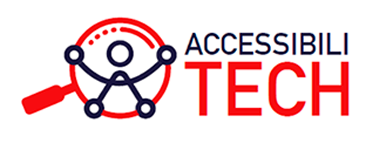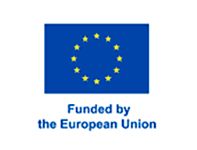In the rapidly changing business landscape of today, workplace safety is not just a statutory obligation—it is a strategic necessity. Organisations that invest in strong safety and health risk management frameworks not only safeguard their workers but also improve productivity, cut operational down time, and advance their reputation. In Singapore, where regulatory standards are stringent, availing professional consultancy and certification Singapore services is becoming an essential step towards long-term success and compliance.
Understanding Safety and Health Risk Management
Safety and health risk management is the process of identifying, assessing, and controlling hazards in the workplace. It is more than reacting to incidents—it is prevention, improvement, and creating a proactive safety culture. The most important elements of an effective risk management system are:
Hazard Identification: Identifying possible sources of harm like machinery, chemicals, or human error.
Risk Assessment: Assessing the probability and severity of occurrence to identify those risks requiring mitigation.
Control Measures: Taking effective measures to eliminate or reduce risks.
Monitoring and Review: Ongoing review of safety performance and refreshing measures where necessary.
Organisations that integrate such principles into their work can minimise workplace accidents, enhance staff morale, and remain in accordance with Singapore’s workplace safety laws.
Why Safety Matters in Singapore’s Business Landscape
Singapore’s Ministry of Manpower (MOM) has strong regulations under the Workplace Safety and Health Act (WSHA). This system requires employers to implement reasonably practicable steps to safeguard their employees. Non-compliance can lead to high fines, business disturbance, and reputation loss.
Furthermore, sectors like construction, manufacturing, logistics, and energy are high-risk industries. Organizations that conduct business in these sectors must hold periodic safety and health risk management reviews and achieve the respective certifications.
The Singapore consultancy and certification’s role
Having a professional consultancy and certification Singapore organisation on board can be the difference-maker in ensuring your organisation’s workplace safety compliance and performance.
Here are several ways a consultancy can add value:
1. Expert Guidance on Regulatory Compliance
Consultants have in-depth knowledge of Singapore’s workplace safety regulations. They help businesses understand what is legally required and offer actionable insights to close compliance gaps. This is particularly useful for SMEs that may not have an in-house EHS (Environment, Health, and Safety) team.
2. Customised Risk Management Systems
Each workplace is different. An effective consultancy will customize your safety and health risk management plan according to the unique hazards, size of workforce, and activities of your organization. This customized approach facilitates implementation on the ground and greater takeup by employees.
3. Training and Capability Building
Workplace safety is not merely a matter of documentation but involves a mindset shift. Consultants can create and implement tailored training programs for employees at all levels. These can comprise hazard awareness, emergency response, and safe work procedures, all of which must be in conformance with WSHA guidelines.
4. Support for Certifications
In Singapore, most companies seek well-recognized certifications such as:
bizSAFE Level 3, 4, and STAR
ISO 45001:2018 Occupational Health & Safety Management Systems
SS 506 Standards
An accreditation and consultancy Singapore company will support your organisation along the way—in system development, internal audits right through to preparation for submission and assessment. With certification, your organisation not only proves compliance, but it strengthens your competitive edge, especially for bidding on corporate or government work.
5. Continuous Improvement
Risk management is not an occasional task. Consultants provide periodic audits, updates, and reviews to ensure that your system grows with changes in operations or regulations. This improvement strategy ensures consistent high safety levels without incurring penalties.
Case Study: Successful Implementation in a Manufacturing Plant
Let’s take the case of a mid-sized manufacturing unit in Singapore that experienced repeated minor injuries on the factory floor. Following the engagement of a local consultancy and certification Singapore company, the following was done:
Initial Gap Assessment: The consultant performed an exhaustive review of current safety measures.
Hazard Mapping and Risk Assessment: All the equipment and processes were analyzed, and the risks were ranked.
Control Implementation: Physical barriers, safety signs, and standard operating procedures were implemented.
Training: Employees were trained practically in equipment handling and emergency procedures.
Certification: The business obtained bizSAFE STAR and ISO 45001 certifications successfully, reflecting positively on its business image.
The plant recorded a reduction of 70% in incidents within six months and was commended during MOM inspections. This is a case study demonstrating how risk management for safety and health, if led by professional consultancy, can yield quantifiable benefits.
Key Considerations When Choosing a Consultancy Partner
If you are considering hiring a safety consultancy in Singapore, consider the following:
Accreditation and Credentials: Verify the consultants are MOM-approved and have experience working in your industry.
Track Record: Ask for case studies or testimonials from previous clients to assess their success with similar projects.
Customisation: Shun cookie-cutter solutions. The ideal consultants provide custom solutions.
End-to-End Services: Select a provider who can assist you from risk assessment to certification and training.
Post-Certification Support: Seek consultants who provide regular reviews and updates, rather than a one-off service.
The Future of Workplace Safety in Singapore
As increasing focus is placed on sustainability, mental wellbeing, and digitalisation, the future of workplace safety is moving beyond conventional hazards. Emerging issues like ergonomic injuries, stress management, and cyber threats are becoming more prevalent. Progressive organisations need to embrace a holistic and adaptive approach to safety and health risk management.
Singapore’s government also makes regular efforts to enhance the national safety culture by running campaigns, providing grants, and offering training incentives. Therefore, the market for consultancy and certification Singapore services will keep expanding.
Conclusion
Effective safety and health risk management is essential for protecting your workforce, ensuring compliance, and driving business success. In Singapore’s tightly regulated environment, partnering with a qualified consultancy and certification Singapore firm provides the expertise and support necessary to build a safe, productive, and future-ready workplace.
Whether you’re embarking on risk management for the first time or seeking to gain ISO accreditation, professional advisers will guide you through the minefield with authority. Make safety more than an obligation, a pillar of corporate strategy.


